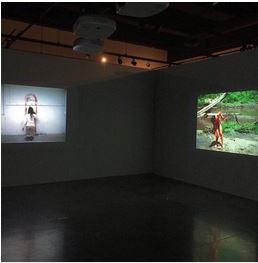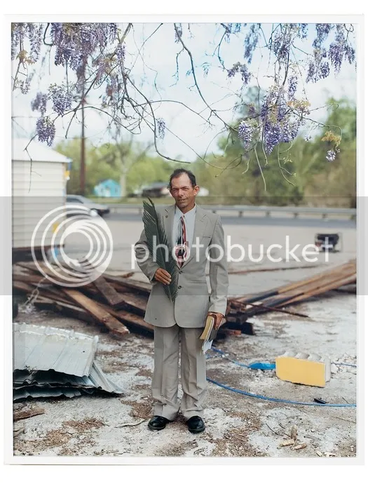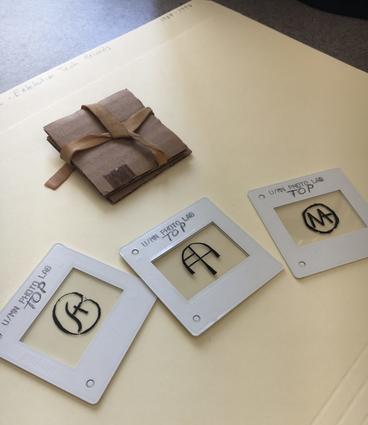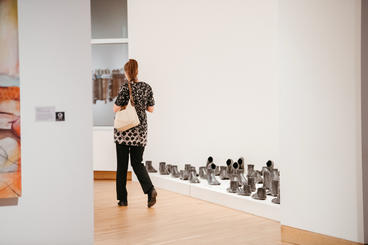Art exhibitions are curated to connect the artwork to the gallery space. The connection is designed to pull an experience from the viewer. I’m sure most have experienced a specific feeling from an exhibit, but have you ever thought what elements, other than the artwork, made you feel that way?
Covered in Time and History: The Films of Ana Mendieta is the current art installation at the Katherine E. Nash Gallery on West Bank. Ana Mendieta is a Cuban-American artist who is best known for her performance earth-body work. The earth-body work is Mendieta relating her personal form to the natural form of the earth. This is captured in many of the films in the exhibition. Mendieta’s artwork has an uncanny, boundary-pushing feel that I have always enjoyed. Additionally, the exhibition is perfect for this time of year with chilly weather, overcast skies, and an eerie ambiance. The feeling of late fall is echoed in the exhibition of Mendieta’s work. But, the real edge in this exhibition is the way that it is curated.
It is the curator’s job to create the experience of viewing artwork. I usually take note of the way that exhibitions are curated because I want to become a curator one day. I love the way that the atmosphere of a space can be made to reflect the artwork within it. For this exhibition, the Katherine E. Nash gallery space has very dim lighting, white walls, and transparent curtains that create a “haunting” feeling as spectators walk through the space. However, after talking with my friend Kim David, who opens up the gallery, I realized how Ana Mendieta’s works could be experienced in an entirely different light.

A couple weeks ago, Kim was telling me about her experience opening up the gallery. Her job is to walk through and turn on the projectors to display the films on the walls. I had experienced and understood the feeling of the space when the videos were turned on, but I never considered how it would change if you were alone in the darkness, controlling the films. While I find the exhibition eerie, Kim’s experience is frightening. A simple change to the atmosphere, such as the absence of light, can drastically change a viewer’s experience. These are the things to be considered when designing the ambiance of an exhibition. Kim also wants to be a curator in the future, so like me, she notices the artistic nuance, or specific details in a work’s presentation, of a gallery space.
This nuance is designed to create a connection with the artwork, and therefore an experience for the viewer. With the Nash Gallery being on campus, I believe that it is a great opportunity for students to think about curatorial choices within an exhibition. When you visit Covered in Time and History: The Films of Ana Mendieta, ask yourself: Why did the curator make certain choices? Why are the films displayed in a this order? What outside elements are added to the space create that “eerie” feeling?
WAM Collective member Elise Armani curated a companion exhibition, Ana Mendieta: Documents of a Life in Art, on view in the Wilson Library now through January 15th, 2015.



